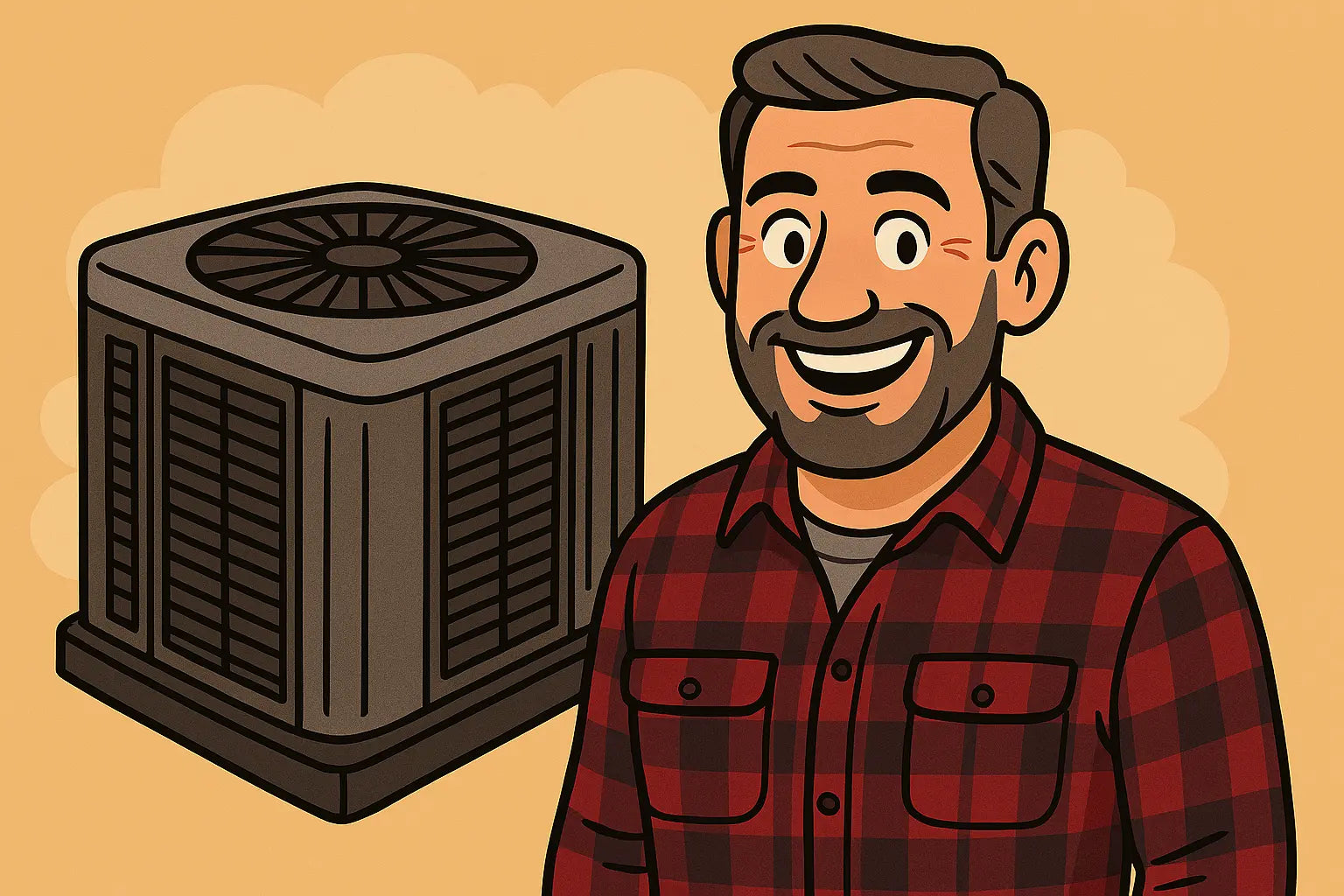Intro From Mike 😎
Mike here again. This post is all about the technical “nuts and volts”: installing that Goodman 3‑Ton R‑32 condenser GLXS4BA3610 paired with CAPTA3626C3 and GR9T961005CN. I’m walking through prep, brazing, vacuum, charging, electrical, and startup testing—no shortcuts, just real‑world, safety-first steps. Let’s get into it.
Why Proper Installation Matters
The Goodman GLXS4BA3610 condenser uses R‑32 refrigerant, which requires certified handling and UL 60335‑2‑40 safety protocols. This matched system (coil + furnace) delivers maximum efficiency and warranty coverage—but only if installed by the book, with the right tools and procedures. For a solid overview, check Goodman’s official product page.
1. Pre‑Installation Prep
-
Verify AHRI Matching: Make sure the condenser, CAPTA3626C3 coil, and GR9T961005CN furnace are AHRI-certified together. Compatibility is non-negotiable with R‑32 systems.
-
Site Requirements: Maintain 18″ clearance on all sides, 60″ vertical clearance, and mount on a level pad rated for 150% weight. Cabinet airflow must be unobstructed.
-
Electrical Planning: Plan for a 208–230 V, 30 A circuit using 10‑AWG wire, with a fused disconnect within sight of the condenser. Use HACR breaker or time-delay fuses per spec sheet. Here’s a useful reference on electrical requirements for HVAC.
2. Line‑Set Brazing & Leak Testing
-
Use 3/8″ liquid and 7/8″ suction lines (standard for this 3‑ton unit). Ensure total equivalent length stays within 50 ft unless applying line‑set correction factors.
-
Purge with dry nitrogen while brazing to avoid oxidation. Don’t open service valves or pressurize until joints fully cool—heat can cause an R‑32 flash event.
-
After brazing, pressure-test with nitrogen at ~150 PSI and hold for at least 30 minutes to validate leak-free connections. Because R‑32 leaks are less visible, use an A2L-rated leak detector for accuracy.
3. Evacuate & Triple‑Evac
-
Use a micron gauge and achieve 500 microns or better (ideally 250 microns). Triple evacuation (vacuum to break with nitrogen and repeat) protects the compressor and removes moisture effectively. This method is explained well in this HVAC School tutorial on triple evacuation.
-
Avoid accelerating vacuum near scroll compressors—use caution to prevent arcing damage.
4. Refrigerant Charging
-
The unit ships pre-charged for ~15 ft of line set. Add ~0.6 oz of R‑32 per additional foot beyond this. Only weigh-in by scale—don’t rely on pressures or superheat, especially with R‑32.
-
After charging, verify subcooling (10–12 °F typical) and superheat if required, referencing Goodman’s manual for spec charts. For best practices, see this Energy.gov refrigerant charging guide.
5. Electrical Connections & Wiring
-
Connect line voltage per the S&R plate spec, ground properly, and install surge protection if possible. Include time-delay contactor and high-pressure safety switch per UL guidelines.
-
Wire low‑voltage from thermostat to control board: R to R, Y to Y1, G to G, W to W2, O/B to O/B, C to C. Confirm ComfortBridge compatibility if using smart thermostats.
-
For a refresher on wiring basics, here’s an excellent HVAC Wiring Guide from HVAC Know It All.
6. Startup Testing & Commissioning
-
Verify airflow: Ensure blower settings on the GR9T961005CN match static pressure. Seal ducts and balance supply/return as needed.
-
Monitor electrical draws: Clamp meter checks on compressor and blower should align with spec allowable limits.
-
Safety Checks: Confirm evaporator coil drain slope, condensate trap installs, float switch operation, and proper thermostat cycling.
-
Labeling & Documentation: Add R‑32 warning labels on unit, note refrigerant weight and line-set length, and record gauge readings for client files.
7. Final Compliance & Best Practices
-
Only EPA Section 608-certified HVAC techs can legally charge R‑32 gas. UL 60335‑2‑40 compliance documentation should accompany job records.
-
Ensure product registered online within warranty window for full 10-year coverage derived from Goodman’s literature library or product spec sheet registration requirement.
-
If local code mandates listing or inspection, coordinate before powering up. Here’s an overview on EPA refrigerant handling regulations.
MIKE’S PRO TIPS 💡
-
Label every line set with length and refrigerant detail.
-
Photograph vacuum and pressure readings before turning over.
-
Use delayed-start relay or surge protection—keeps compressors alive through spiking conditions.
-
Keep coil cleaner and fin straightener in your tech bag—saves callbacks and earns trust.
Final Thoughts 🧰
Alright, that’s a wrap on getting your Goodman system installed the right way — no shortcuts, no guesswork, just clean, solid HVAC craftsmanship. I know these installs can feel like a beast the first time, especially when you’re working with high-efficiency gear like the 15.2 SEER2 GLXS4BA3610 condenser, the CAPTA3626C3 coil, and that 96% AFUE GR9T961005CN gas furnace. But with a little planning and the right tools in your belt, this system goes in smooth and runs like a dream.
If you're ready to grab the full system or want to review the specs again, here's the link to check it out:
👉 Goodman 3 Ton 15.2 SEER2 System with GLXS4BA3610, CAPTA3626C3, and GR9T961005CN
Curious about refrigerant in this system? Visit: R-32 Done Right: Safety & Charging Best Practices for the Goodman GLXS4BA3610 System.
Stay safe out there, and if you ever need to double-check pressure charts, line sizing, or just want to geek out over gear — you know where to find me. 💪🔥
— Mike Sanders







